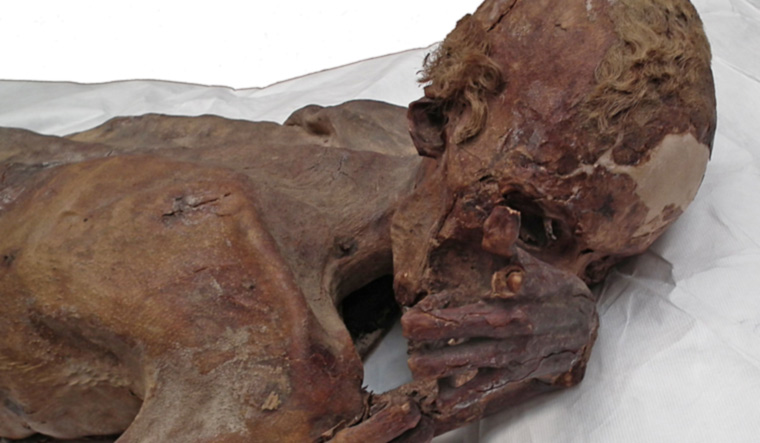The ancient Egyptians developed sophisticated embalming treatments far earlier and across a wider geographical area than previously known, a study on a well-known prehistoric mummy has revealed.
It is the first time that extensive tests have been carried out on an intact prehistoric mummy, according to researchers from the University of York in the UK and Macquarie University in Australia.
The study, published in the Journal of Archaeological Science, consolidates their previous findings that embalming was taking place 1,500 years earlier than previously accepted.
Dating from 3,700-3,500 BC, the mummy has been housed in the Egyptian Museum in Turin since 1901.
However, unlike the majority of other prehistoric mummies in museums, it has never undergone any conservation treatments, providing a unique opportunity for accurate scientific analysis.
"The examination of the Turin body makes a momentous contribution to our limited knowledge of the prehistoric period and the expansion of early mummification practices as well as providing vital, new information on this particular mummy," said Jana Jones from Macquarie University.
"We confirm that this ritual mummification process took place around 3,600 BC on a male, aged between 20 and 30 years when he died," Jones said.
The Turin mummy was previously assumed to have been naturally mummified by the desiccating action of the hot, dry desert sand.
The team uncovered evidence that the mummy had in fact undergone an embalming process, with a plant oil, heated conifer resin, an aromatic plant extract and a plant gum/sugar mixed together and used to impregnate the funerary textiles in which the body was wrapped.
This 'recipe' contained antibacterial agents, used in similar proportions to those employed by the Egyptian embalmers when their skill was at its peak some 2,500 years later.
The study builds on the previous research which first identified the presence of complex embalming agents in surviving fragments of linen wrappings from prehistoric bodies in now obliterated tombs at Mostagedda in Middle Egypt.

